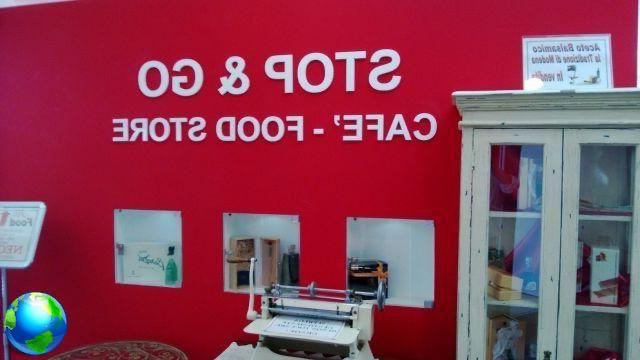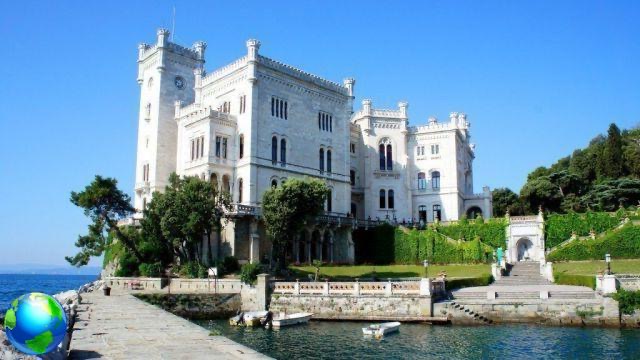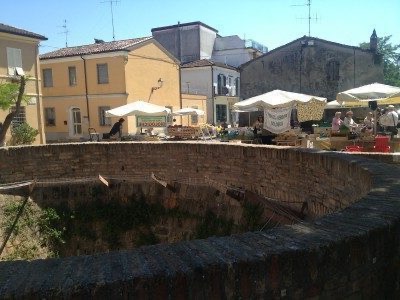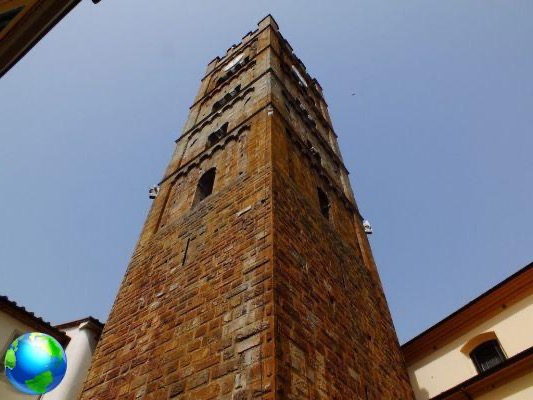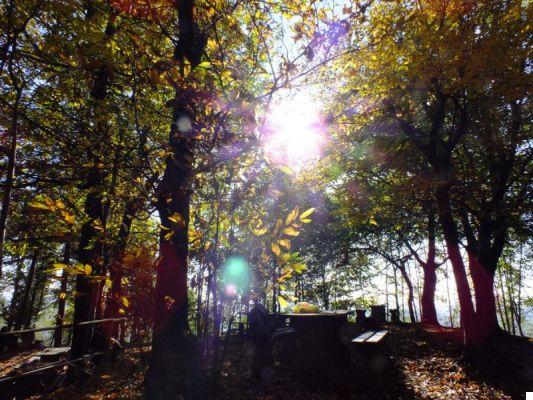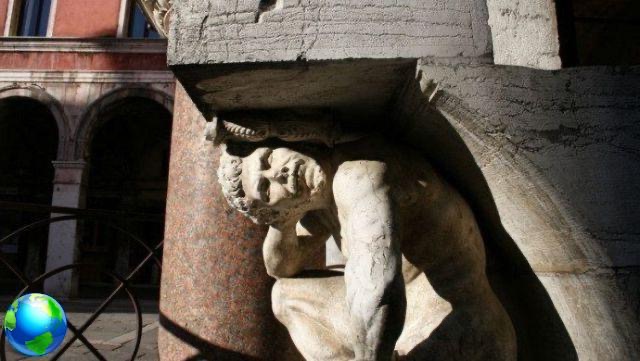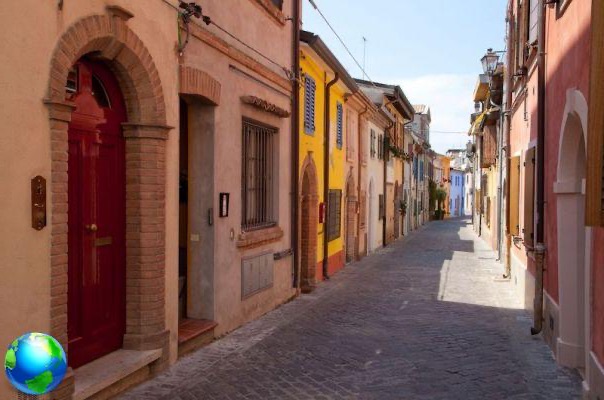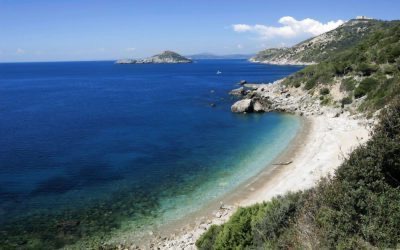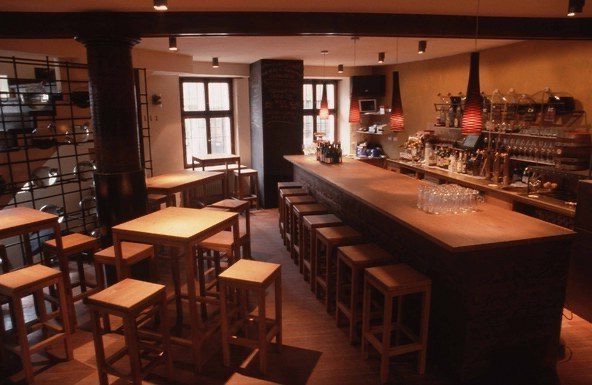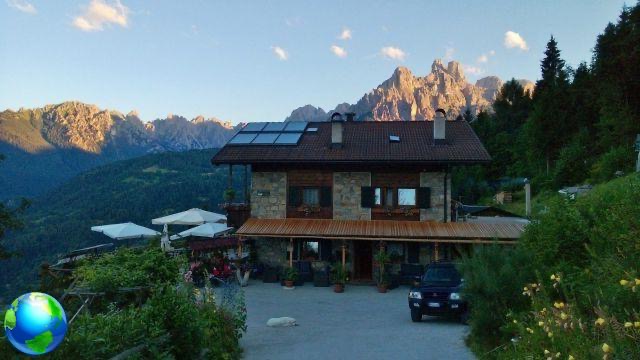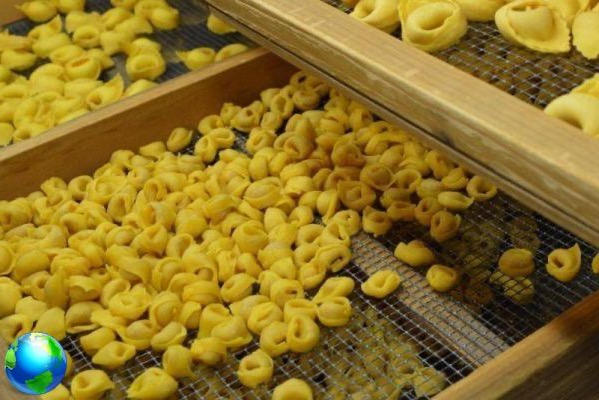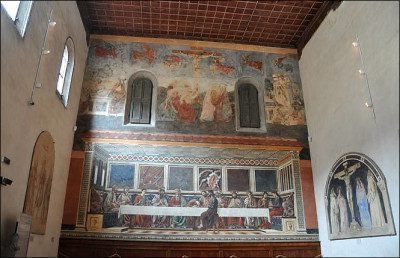The archaeological site of Pompei it does not need any great introduction, it has fascinated young and old for at least 3 centuries and it is an incredibly magical place. There is nothing like it anywhere else in the world, except for Herculaneum which has had the same fate. Pompeii stood forever in its last moments of life in 79 AD thanks to the eruption of Vesuvius which buried it under a thick layer of ash and lapilli. Thanks to this, since it was rediscovered in 1748 and archaeological excavations began to bring it back to light, it has been able to give us a perfect insight into Roman life of inestimable value. It may seem strange to you but Pompeii has long held the record as the most visited place in the world and I hope that it can take it back as soon as possible, as it deserves.
Visiting Pompeii, however, requires a fair degree of organization, especially if you don't have more than one day to dedicate to it.
The surface of the ancient city was about 66 hectares; the excavated surface is about 44 hectares (2/3 of the settlement) where they were brought to light 1500 buildings (including domus and monuments): a very large area. I tell you right away that it is impossible to think of visiting the whole site in a single day, even if you are a marathon runner. But do not despair, in one day it is still possible to visit most of the most important monuments if you follow a reasoned itinerary that will avoid unnecessary runs back and forth.
NOTE Solo up to 8 January 2017 (but they could extend this date) the excavations of Pompeii host 30 sculptures by Igor Mitoraj, the Polish sculptor famous for his huge bronze gods. The sculptures are installed in key places within the excavations creating a unique synergy. Absolutely not to be missed !!
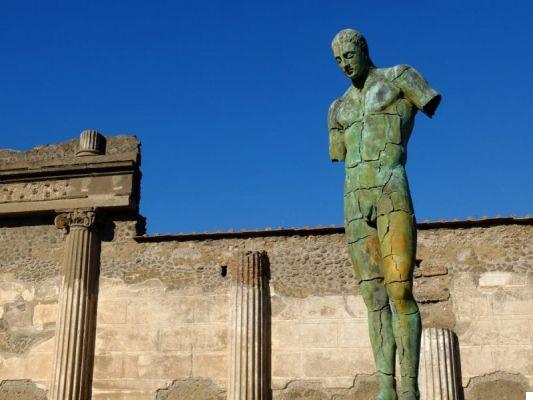
Pompeii Excavations: how to reach them
From Naples, the most comfortable (and fastest) way to get to to reach Pompeii is the circumvesuviana. Take it from the Central Station (P.ta Garibaldi) and go down 40 'later at the stop "Pompeii Villa of the Mysteries". The ticket costs 2,40 euros. Porta Marina is the main entrance to the archaeological excavations, here you will find the ticket office, the luggage room, the bathrooms, the ATM, the information center and the bookshop.
If you follow the itinerary that I have proposed (see below) you will then exit from Piazza Anfiteatro and you can resume the Circumvesuviana to return to Naples from the stop "Pompeii Sanctuary”Which is located a few hundred meters from there.
Pompeii: opening hours and prices
- From April to October: h9- last admission h18 (closing h19: 30)
- From November to March: 9am - last admission 15.30pm (closing 17pm)
Price: 13 euro full / 7.50 reduced
If you want to be sure to enter without queuing you can buy the skip-the-line ticket through the Get Your Guide website (see box below); to the ticket you can also add an audio guide or a 2-hour visit with an archaeologist.
Access for the disabled: from December 3, 2016 the path "Pompeii for everyone“, 3 kilometers long, which also allows people with mobility problems to visit the archaeological area from the entrance of Piazza Anfiteatro to the former Antiquarium.
There are also different types of cumulative tickets which include Pompeii, Herculaneum, Oplontis, Stabia and Boscoreale.
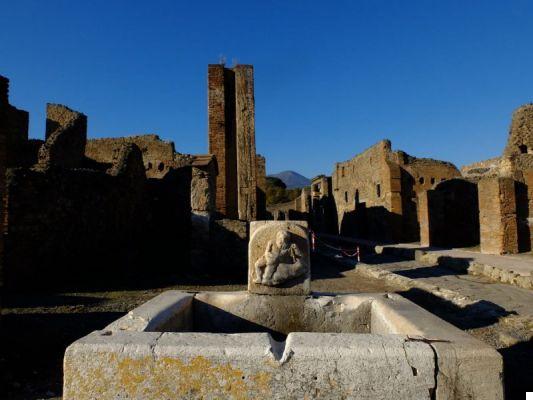
How to visit the excavations
The itinerary that I propose takes between 5 and 6 hours and the numbers referred to are those you find in the map (which you can download here) and in the Excavation Guide that is provided to you by the information center (free of charge) immediately afterwards. the ticket office of Porta Marina.
Like every city, Pompeii was also divided into districts, called Regi, and there were 9 (also indicated on the map).
The visit starts from Porta Marina, the main entrance, which you can easily reach with a 40 'circumvesuviana ride from Naples Central Station, getting off at the “Pompei Villa dei Misteri” stop. At Porta Marina you will find the ticket office, the left-luggage office, the bathrooms, the ATM, the information center and the bookshop.
After the ticket office you will find yourself on via Marina which marks the border between Regio VII and Regio VIII; enter immediately on the right to visit the Sanctuary of Venus (Regio VIII- N.1) which is located on a scenic terrace with a beautiful view of the gulf in the distance. Continuing always on the right side you will find the magnificent Basilica (Regio VIII- N.2); it was the most sumptuous building in the Forum where affairs and the administration of justice were handled.
Continuing you will enter the Forum (Regio VII- N.5), that is the center of daily life, where the most important public buildings and the main places of worship overlook. To exit the Piazza del Foro, take Vicolo del Foro (where the bar-restaurant is also located) to visit the beautiful Baths of the Forum (Regio VII- N.10). The baths are richly decorated (especially the part reserved for men), there are niches for storing clothes and a vault decorated with elaborate relief stucco. Exit on the side of Via delle Terme and, right in front, you will find yourself in front of the House of the Tragic Poet (Regio VI-N. 4) famous for the mosaic with the inscription "Beware of the dog" (Beware of the dog) at the main entrance. Don't miss it right behind Casa del Fauno (Regio VI- N.1), one of the largest houses in Pompeii, famous for the statue of the Faun and the large mosaic representing the battle between Alexander the Great and King Darius (copies are on display, the originals are in the Museum Archaeological of Naples).
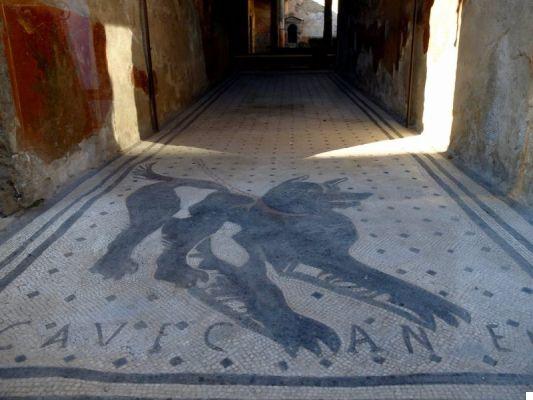
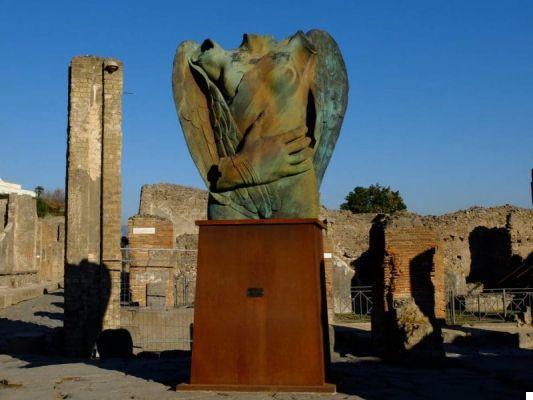
From here continue along Via della Fortuna until you meet Via Stabiana which you will take to the right until the other "big" intersection with Via dell'Abbondanza from which you can access the beautiful Stabian Baths (Regio VII- N.16) and, immediately behind, al Lupanar (Regio VII- N.18). The latter was the brothel where prostitutes (mostly Greek and Oriental slaves) exercised the oldest profession in the world. On the walls of the central corridor you will see the small pictures representing erotic representations.
Then go back to resume Via Stabiana (towards the Porta di Stabia) to reach the gymnasium, the Teatro Grande, the Teatro Piccolo and the Barracks of the Gladiators (Region VIII- N. 9-10-11-12).
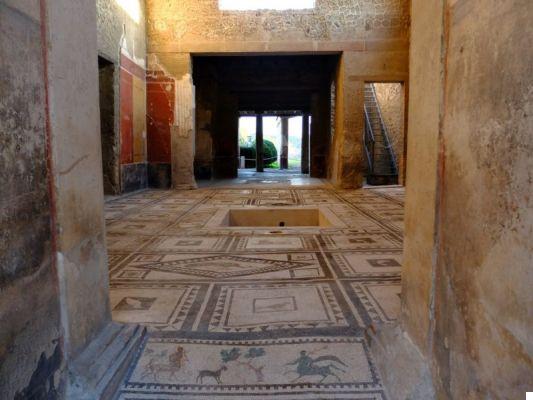
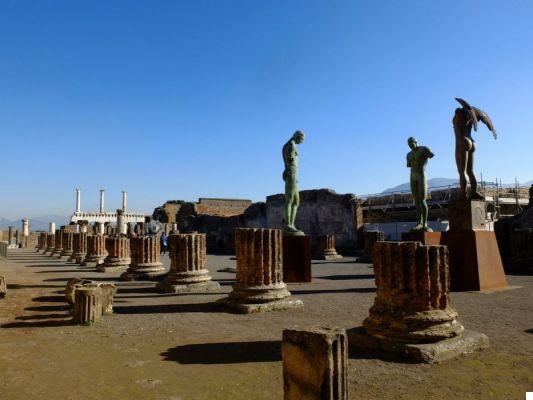
When you have finished visiting these magnificent buildings, retrace your steps a bit to take Via del Menandrianus and reach the homonymous Villa (Regio I-N.7). This stupendous villa belonged to a rich Roman family; the rooms are frescoed and there is also a small private spa district. Here a silverware chest was found which is now on display at the Archaeological Museum of Naples.
From here, go back to Via dell'Abbondanza (there is a bar to stop if you want) to visit, one after the other, several buildings and villas that have been open for a few fresh months of restoration (Regio I- N . 8-9-10-11): the Casa di Paquius Proculus (with refined mosaics), the House of the Ephebe Casa e Café di Vetutius Placidus (where drinks and hot food were served and where the probable collection of the last day was found) and the House of the Orchard or Floral Cubicles (which preserves the finest example of garden painting in the city).
Deviate momentarily on Vicolo dei Fuggiaschi to go and visit the impressive Garden of the Fugitives (Regio I- N.14) which still preserves the bodies of 13 victims who died while trying to escape.
Resumed Via dell'Abbondanza, do not miss the House of Venus in the shell (Regio II- N.2) with the beautiful fresco of Venus, and the Praedia by Giulia Felice (Regio I-N.3) with its very elegant colonnade.
You have now almost reached the end of the visit which coincides with theAmphitheater and Great Gym (Regio II - N. 5 and 6). Note of color: it is in this amphitheater that David Gilmour played this summer after 45 years from his concert with Pink Floyd.
At this point you will have the exit up in front of you Piazza Anfiteatro and, turning left, you can reach the "Pompei Sanctuary" Circumvesuviana stop to return to Naples. Attention, if by chance you should continue towards Sorrento instead, you will have to return to the “Pompei Villa dei Misteri” stop!
If you have more time, it's definitely worth a visit too Villa of the Mysteries, which is isolated from the rest of the archaeological excavations.
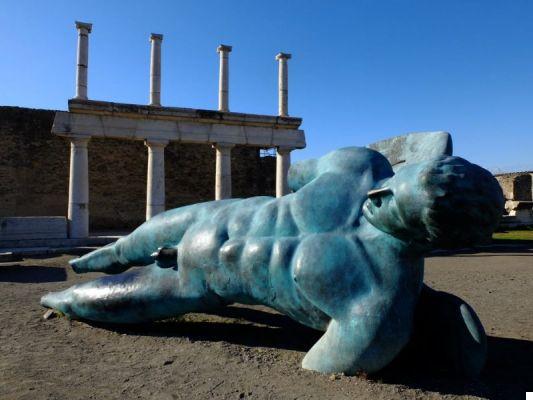
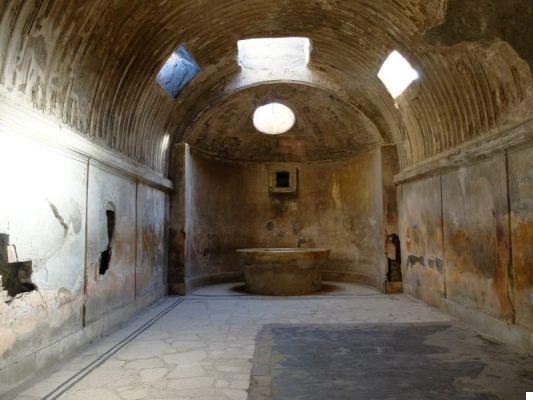
You might also be interested in these other articles I wrote about Naples and Campania:
- What to see on the Amalfi Coast in 3 or 5 days
- What to see around Naples: 7 trips out of town not to be missed
- Unusual Naples: 10 places not to be missed
- Where to eat in Naples, the best pizzerias and pastry shops
- What to see in Naples in 3 days
- 10 beautiful farmhouses with swimming pool in Campania





